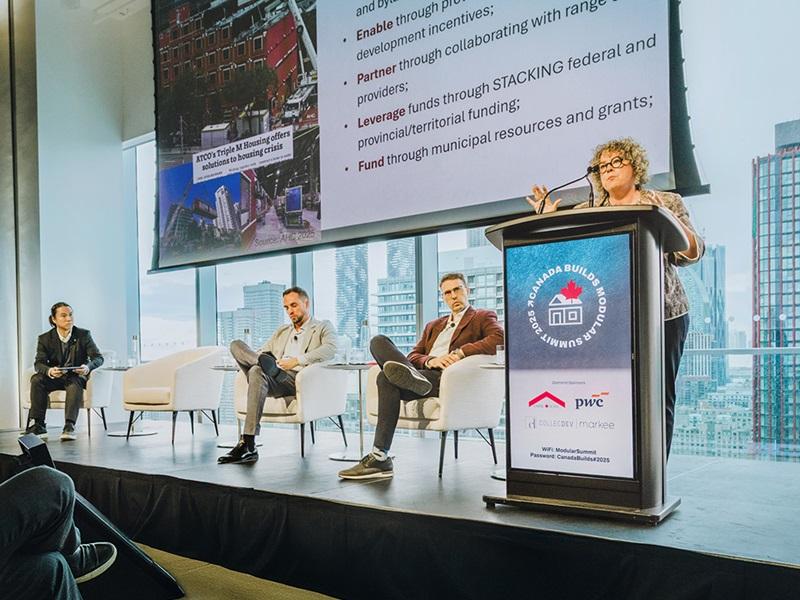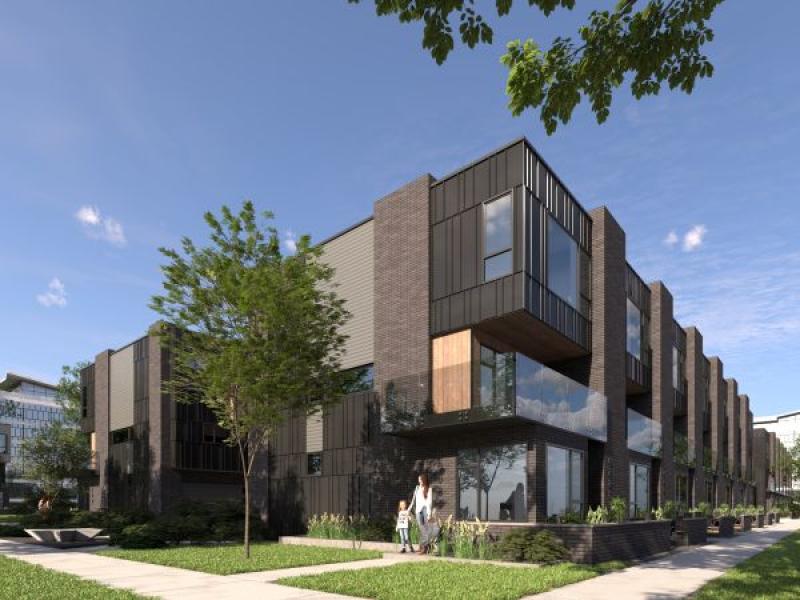GUEST SUBMISSION: If you dropped a framer from 1955 onto one of our job sites, they’d be confused for maybe two minutes. After they figured out what a battery nailer is and adjusted to the sound of compressors humming in the background, they’d go right back to work framing walls, levelling joists and climbing scaffolds the same as ever.
It would all feel familiar, perhaps eerily so.
The truth is, residential construction in North America has barely evolved over the past century. The job site of 2025 is not so different from the job site of 1925.
We have more safety gear, fancier tools, better project management software, and the occasional drone flyover. But the actual work: cutting, nailing, lifting, stacking, is still done largely by human hands, on site, one piece at a time.
This isn’t just a hunch, it’s backed up by data. Brian Potter’s deep dive on Construction Physics - Measuring Construction Efficiency - reports output per construction worker in the U.S. has remained essentially flat for the past 50 years despite rising costs, better tools and more software.
While industries like agriculture and manufacturing have seen explosive productivity gains thanks to automation, technology and scale, construction has stubbornly resisted the trend, with labour input still doing most of the heavy lifting. A perfect horizontal line. If you're looking for exponential curves and Moore’s Law-type trajectories, you're in the wrong industry.
Some might find this baffling. In an age of 3D printing and AI everything, why are we still building houses like it’s 1955?
The answer, I think, lies in the unique and stubborn characteristics of construction. Building homes is still deeply manual, deeply local, and deeply resistant to change.
The factory fantasy
Enter the prefab panacea. Every few decades, a new generation of optimists rediscovers prefabrication, convinced that the way out of our productivity rut is to build homes in factories, ship them to site and assemble them like IKEA furniture.
On paper, it’s a compelling idea: controlled environments, repeatable processes, fewer delays, fewer workers and the potential for real innovation in materials and methods.
The history of prefab homes is littered with white elephants. Time and again, the industry has seen massive factories built with venture capital enthusiasm and government grant fanfare, only to be shuttered within a few years when demand dried up or the shipping bills arrived.
The promise of factory-built homes has repeatedly collided with the hard realities of logistics, market preference and the unforgiving economics of volume.
To make prefab work, you need scale, serious scale. You need a plant that runs 24 hours a day, seven days a week, 365 days a year just to cover your capital depreciation.
You also need the projects lined up in a nice tight radius, because the minute you start trucking boxes across provinces or crossing bridges, your margins evaporate. You’re not just shipping houses, you’re shipping air. And air is expensive when it takes up space on a flatbed.
Prefab also struggles because land approvals are slow, site-specific and can't deliver the volume needed to keep factories running efficiently.
Add to this the North American buyer's distaste for repetition. Most customers do not want a house that looks like their neighbour's. The very concept of mass production conflicts with the emotional purchase that is a home.
Builders know this. We offer variations and tweaks and optional gables not because it’s efficient, but because it’s what the market wants.
Prefab has real value in the right situations, but it’s not a silver bullet for the broader challenges facing homebuilding.
What actually might change everything
So if prefab has been the mirage, what is the oasis?
I think we’re closer than we realize to a radical shift but it’s not coming from modular boxes or tilt-up panels. It’s coming from robotics and artificial intelligence.
Yes, really. You can laugh, but hear me out.
Look at what Tesla is doing with Optimus, a bipedal robot that can pick up objects, fold laundry, move across uneven surfaces and adapt to new tasks using AI. Now imagine that technology combined with the kind of pattern recognition and site-planning tools already emerging from the AI world.
A robot that can read a blueprint, walk into a house under construction and begin framing, hanging, or finishing: not perfectly, at first, but well enough to augment human crews and relieve the labour bottlenecks that are choking this industry.
Robots have been welding cars for over 50 years. Applying that same thinking to job sites is not as far-fetched as it sounds.
This is not science fiction. It’s a logical endpoint of multiple trends. We already use robotic layout tools, drywall lifts and CNC milling for custom panels. We already feed job schedules into software that balances deliveries and subtrades.
The leap to physical task execution to machines that do the work, rather than just plan it, is coming faster than many in the industry are prepared for.
Unlike prefab, this doesn’t require reinventing the entire development model. Robots can walk into a construction site and go to work. They don’t need a climate-controlled factory. They don’t care if it’s raining or snowing.
They don’t need to ship three hours from a warehouse. They just show up, charge up and start lifting.
The bottom line
Construction is one of the few major industries that still relies primarily on muscle and instinct. That has given it resilience, but it has also held it back.
The historical attempts to industrialize homebuilding have mostly failed not because the ideas were wrong, but because the assumptions were.
You can’t mass-produce homes the way you mass-produce dishwashers. The market, the logistics and the product are simply too different.
But robots, especially intelligent, adaptable, bipedal ones, don’t require that kind of transformation. They work within the mess, not against it.
They don’t need a revolution. They just need an outlet.
So no, the framer from 1955 would not be amazed by most of what we do. But if he saw a humanoid robot hanging drywall while an AI read out measurements from the cloud, he might finally sit down, tip his cap and realize that something had truly changed.
And for the first time in 100 years, construction productivity might actually jump the line.









